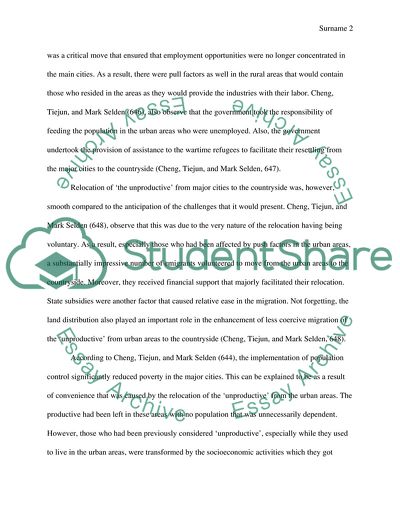The Origins and Social Consequences of China's Hukou System in the Article. https://studentshare.org/social-science/1879241-the-origins-and-social-consequences-of-chinaaposs-hukou-system
The Origins and Social Consequences of China'S Hukou System in the Article. https://studentshare.org/social-science/1879241-the-origins-and-social-consequences-of-chinaaposs-hukou-system.


